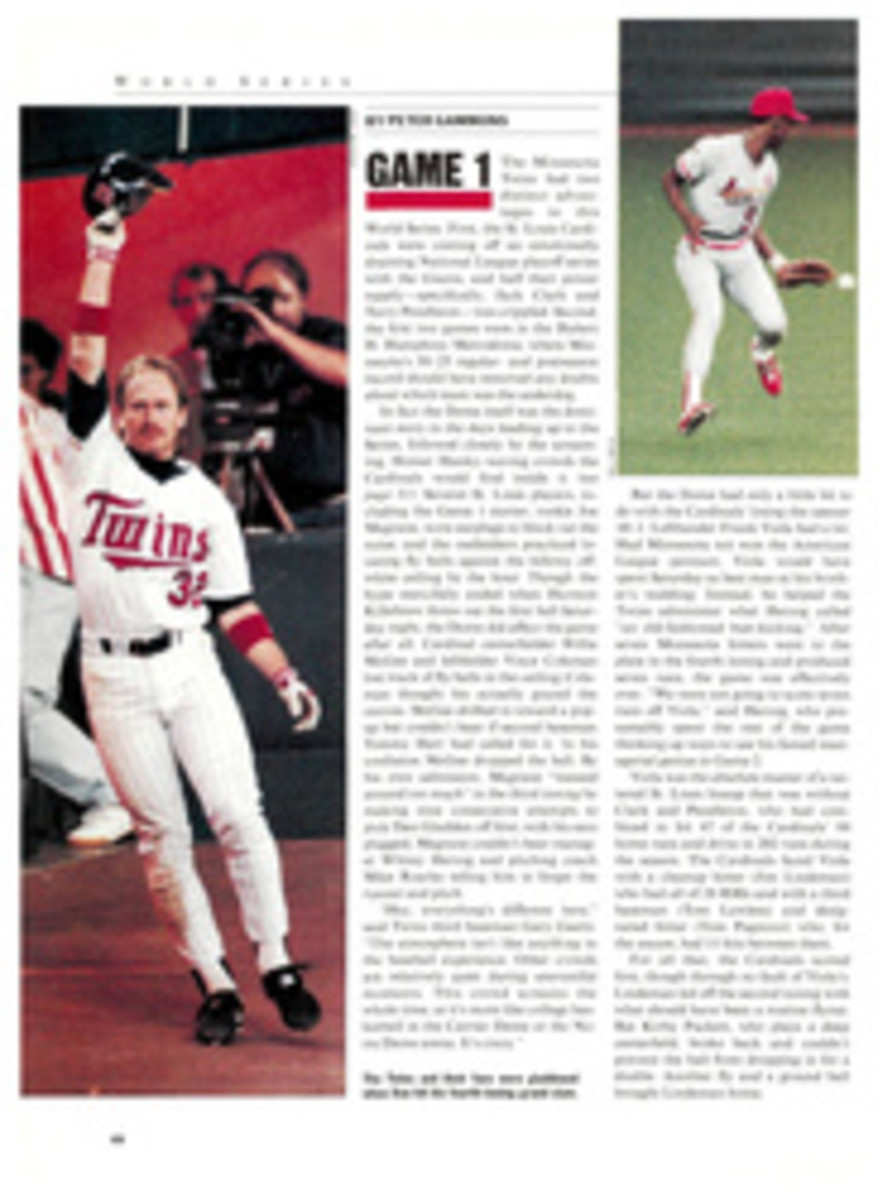
A CO-OP WHICH CURES THAT COOPED-UP FEELING
During the Great Depression, among the items you could buy off the shelves of Julius Ruen's gas station down behind Seattle's Pike Place Market—the original farmer's market, not the touristy place it is now—were Austrian ice axes and a pair of blacksmith-fashioned crampons. You didn't have to fill up the Model A to get the climbing gear, but you had to be a member of the oddball cooperative formed so that its members could afford such unusual hardware. At the time, the entire membership of the co-op could fit in the living room of its founder, Lloyd Anderson.
Haifa century later, on a spring day in 1987, a knot of people gathered outside the entrance of an old building in College Park, Md., waiting for another outlet of the U.S.'s largest consumer co-operative to open its doors and give them the chance to buy solar rechargeable flashlights, inflatable pillows and little plastic-encased thermometers that dangle from backpacks.
Today, nearly two million people have held membership cards for Recreational Equipment, Inc., known in outdoor circles the world over simply as REI. What started as Lloyd Anderson's little gas station experiment in 1938 will do an estimated $150 million in sales this year. Of course, current members are more likely to buy Lycra bodysuits than Swiss-made carabiners, but on the eve of its 50th birthday, REI has not strayed all that far from its founding principles. Every year, as the bylaws dictate, the co-op gives back 85% of its profits to members.
With 17 stores in 10 states and plans to open at least two new retail outlets a year through the end of the century, REI is the envy of its competitors. Last year the co-op added 191,535 members, each of them an owner, each paying a onetime-only fee of $10 for the right to carry the Card—a sort of badge of honor: the lower the number, the higher the status.
In the fiercely competitive outdoor goods and apparel business, REI has consistently turned at least a 7.5% profit on sales. The industry average is less than 3%. But talking about REI as just a business is like talking about Mount Rainier as just a mass of crumbling gneiss. In Seattle, where nearly one in three citizens is a member, REI is a way of life. Singles advertise themselves in personals as "an REI type" in search of a little "creative camping." A down vest, Gore-Tex jacket and "practical" shoes are often referred to as "the REI look."
So, while there are bigger and older outdoor suppliers—L.L. Bean, now in its 75th year, did $368 million in sales last year—it's the rare retailer that serves the same function as a local church, a hangout for true believers. Even before REI opened its store in College Park last spring, there were 17,000 REI members living in the Washington, D.C., area. "It was like a reunion," says store manager Debra Whitted of that day when the doors finally did swing open.
With its racks of high-tech clothes and "calorie-counting" pedometers, REI has become somewhat alien to founder Anderson and his wife. Mary—co-op cardholders No. 1 and 2. No longer connected to the empire he founded. Anderson goes into the store now, sniffs at all the clothes, then wonders where they're hiding the climbing gear.
"When we climbed in the early days, we weren't dressed to kill," he says with a grin, then reminds you that he has been on 450 mountain summits. He is a handsome 85-year-old, with a thick mat of silver hair, deep-set blue eyes and a crisp memory that has colored the years gently.
When Anderson, then a city electrical engineer with a penchant for clambering up rock walls in his time off, founded the co-op, he did so out of pique. He had ordered what he thought was an Austrian ice ax from a Seattle sporting goods store. But when it arrived—several months later, and from Japan—the store owner wanted $12 for the ice ax, a day's wages. Anderson, born poor on a farm, went through the roof.
"That was the spark that set off the co-op," he wrote years later for an as-yet-unpublished history of REI. Between 1936 and 1938 Anderson bought several axes directly from a European supplier, and then offered them for sale to his climbing buddies at $4.25 apiece. A lawyer suggested that the Andersons and four other friends draw up an agreement, and after they paid one dollar each, the co-op was officially founded in 1938. By the end of the year there were 82 members, who divided up a $212 dividend from $1,361 in sales.
For the first half of the co-op's life, the mail-order portion of the business was run out of the Anderson household, even after REI became the Seattle post office's largest customer. Anderson was always tinkering, trying to find or make just the right product. For example, he bought reams of cotton material from a fabric wholesaler, and Mary sewed it into tents, which Lloyd then sprayed with a clear lacquer to make them waterproof.
In the mid-1950s, the co-op hired Jim Whittaker as store sales manager. He is a lanky, storytelling mountaineer who pushed REI into the age of the bottom line. In 1963—when Whittaker took an REI Cruiser backpack to the top of the world as he became the first American to climb Mount Everest—the co-op was growing apace. About that time a representative of General Mills showed up and offered an impressive amount to buy REI. Anderson, still president, turned him down without a second thought: "I said, 'It's not for sale. You can't buy a co-op."
It was Whittaker (card No. 647 and the co-op's president from 1971 to 1979) who opened up the first store outside Seattle, in 1975, and expanded the inventory far beyond climbing and camping gear. He felt that REI had to grow every year in order to keep prices down. "Early on, I would feel good if I managed to sell a guy a bag of nuts while talking about a certain mountain," Whittaker says. "But we couldn't stop the growth, so we just rode with it. I used to tell Lloyd we would become the Sears Roebuck of the outdoors."
Wally Smith, REI's current president, hopes eventually to open a co-op outlet in every major North American city. The outdoor boom, says Smith, has not leveled off but has changed, as backpacking baby boomers introduce their toddlers to the outdoors. Does this mean REI is going soft? Smith, who was hired by Lloyd Anderson as a mailroom clerk and has worked at REI ever since, says an emphatic no. The members keep checking the "more active" box in co-op surveys inquiring into changes in their life-styles and want more products that push them instead of pamper them.
TWO PHOTOS
RICH FRISHMAN
REI's founder, Lloyd Anderson, received card No. 1, and wife Mary wasn't far behind.
PHOTO
RICH FRISHMAN
Smith presides over a $150 million-a-year operation.
Timothy Egan is a Seattle-based journalist who is writing his first novel.

